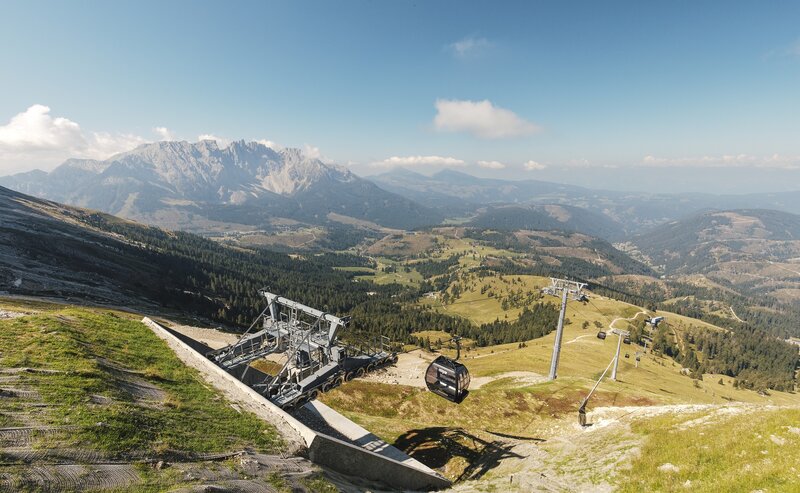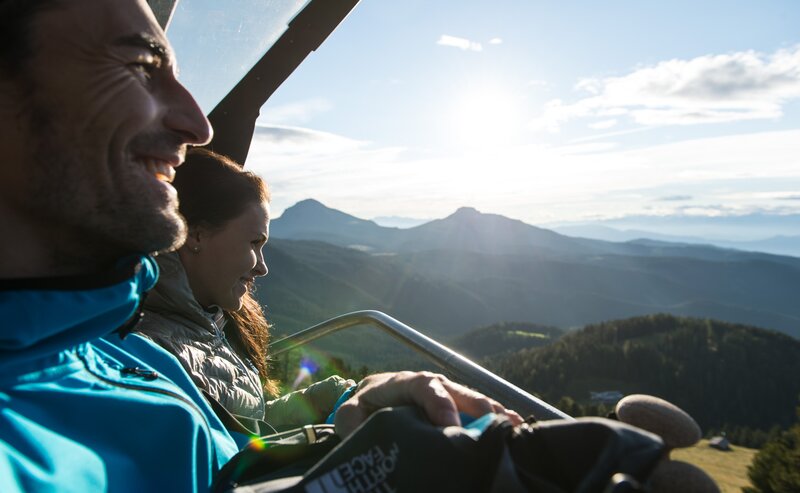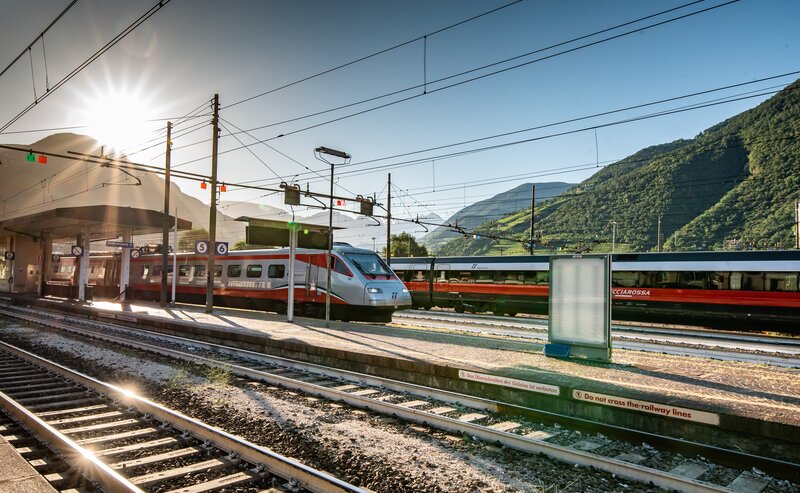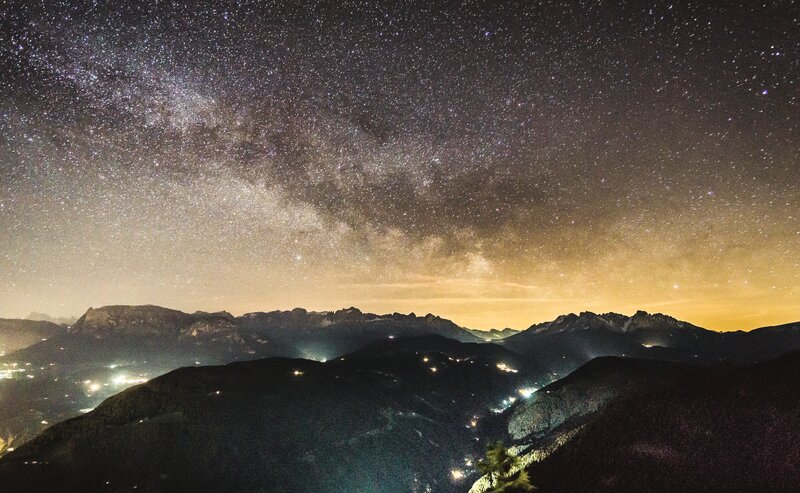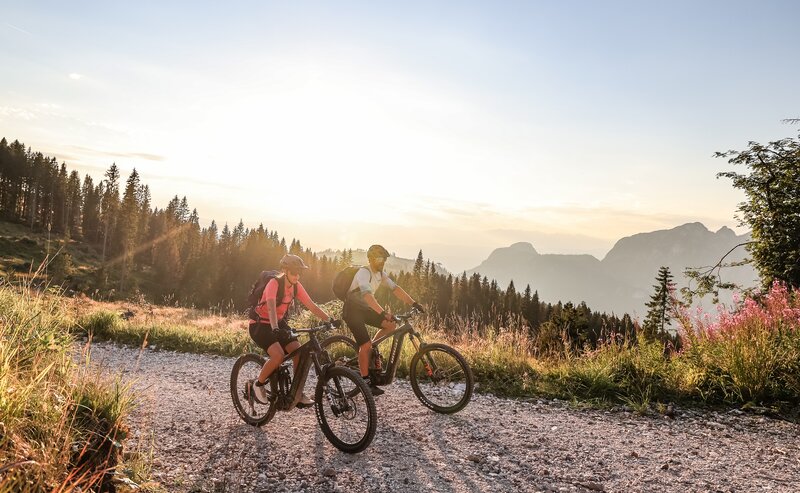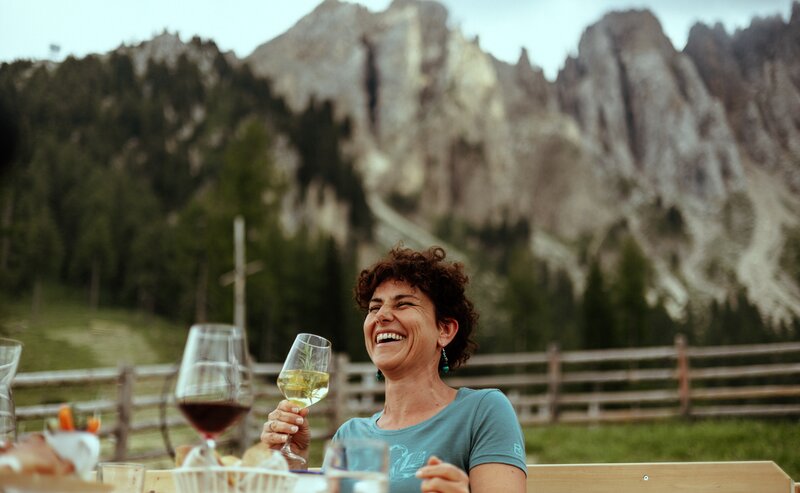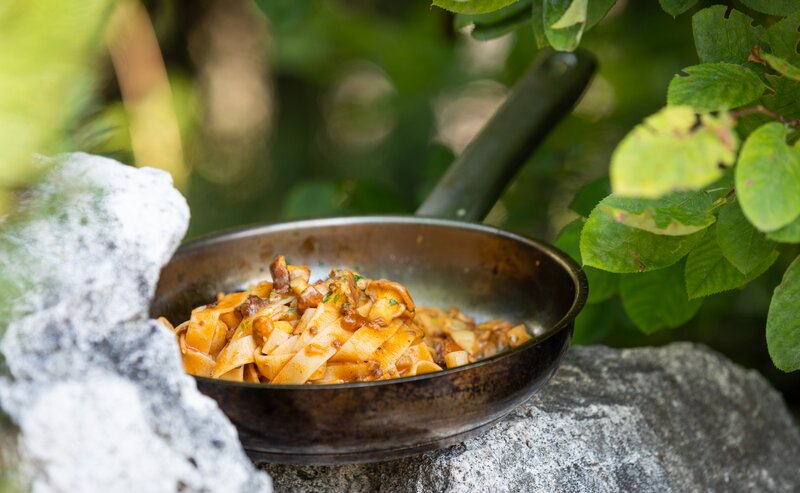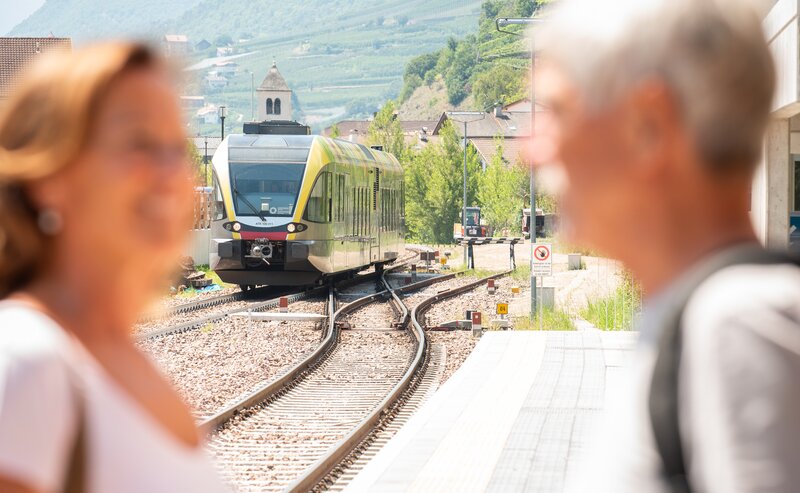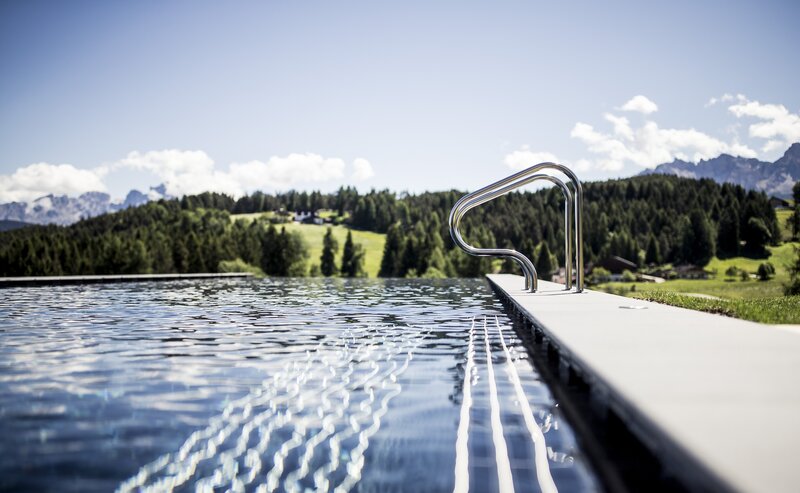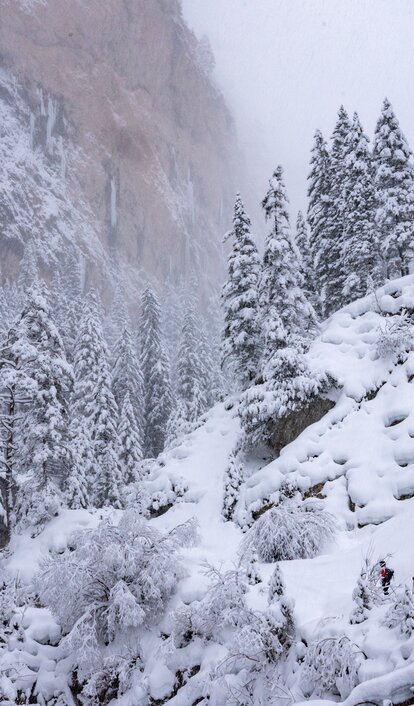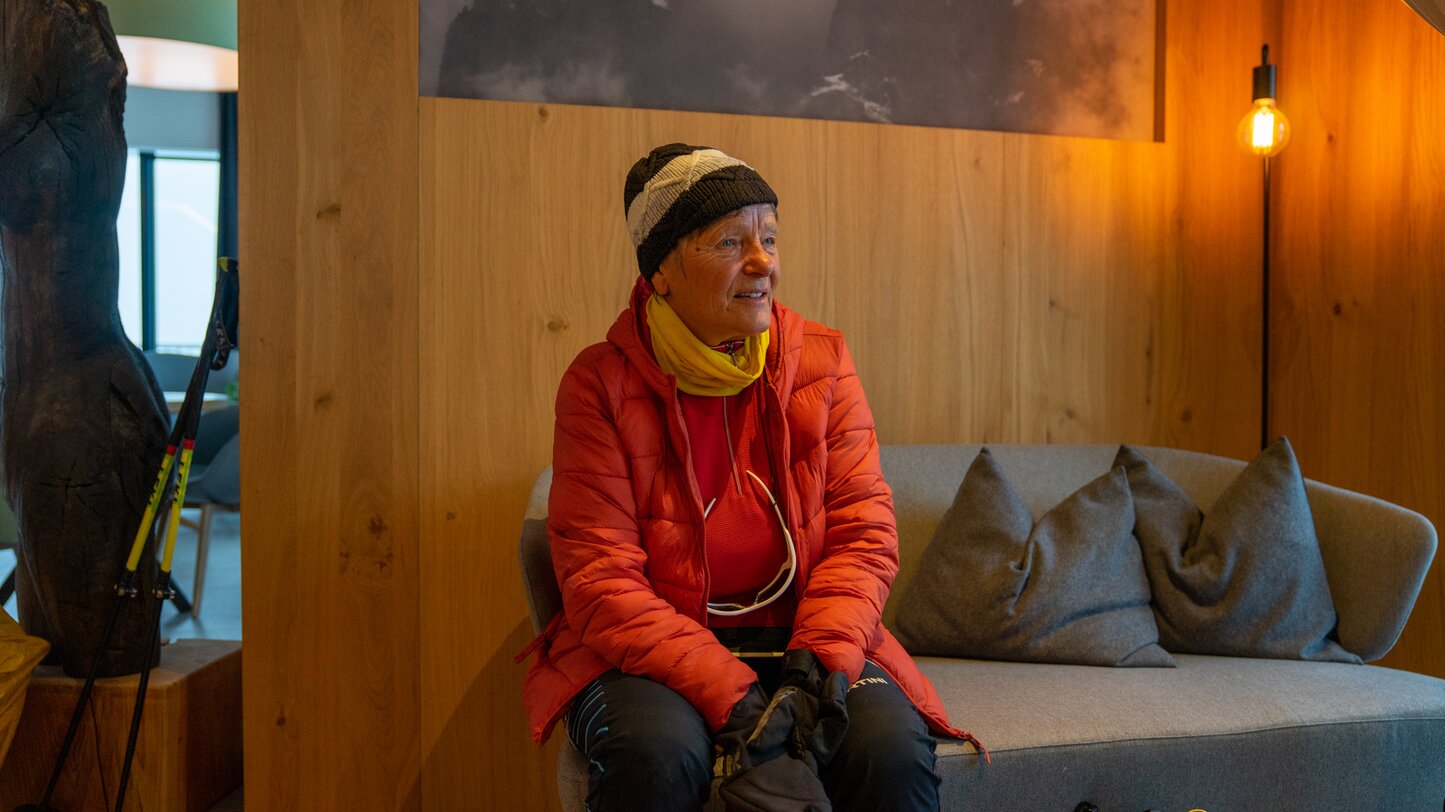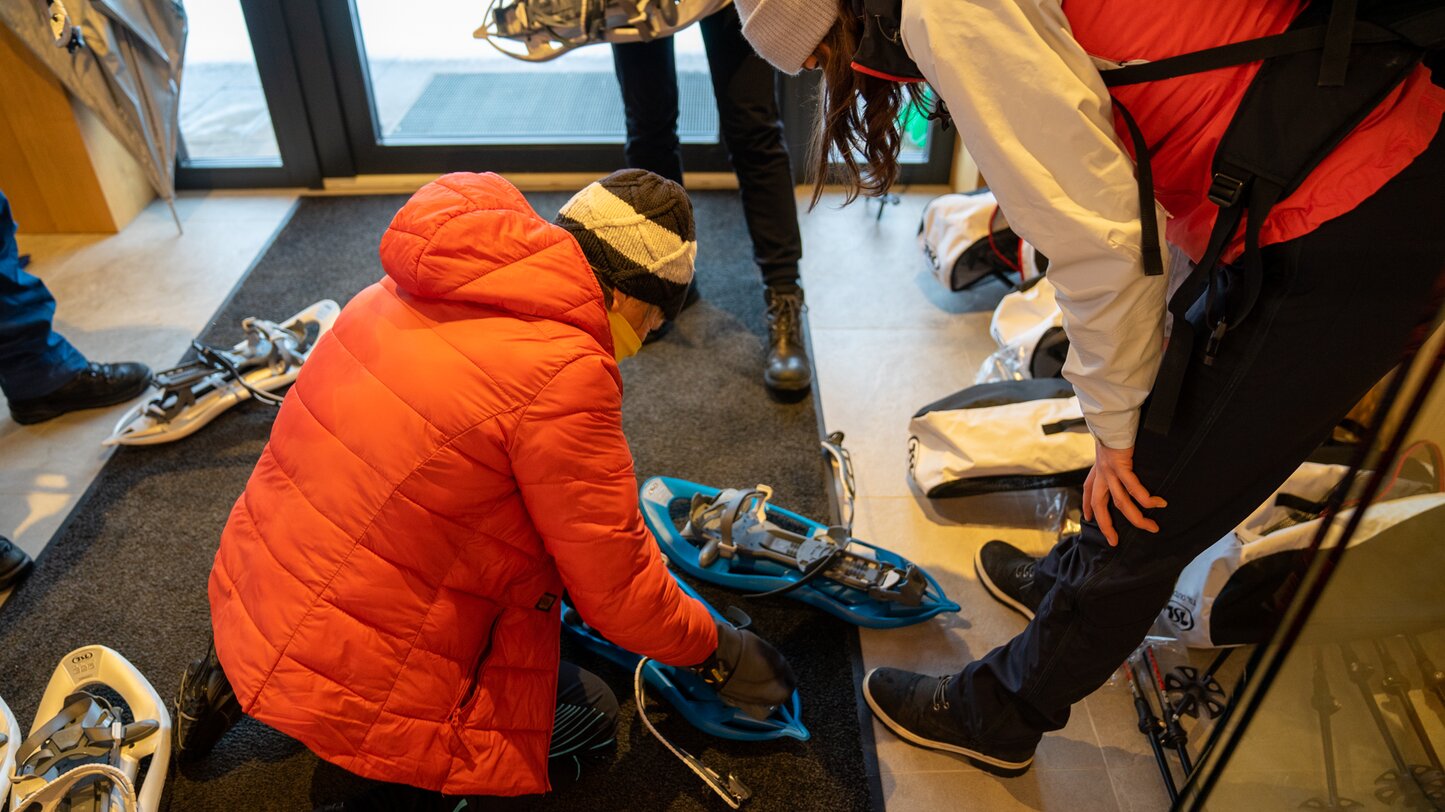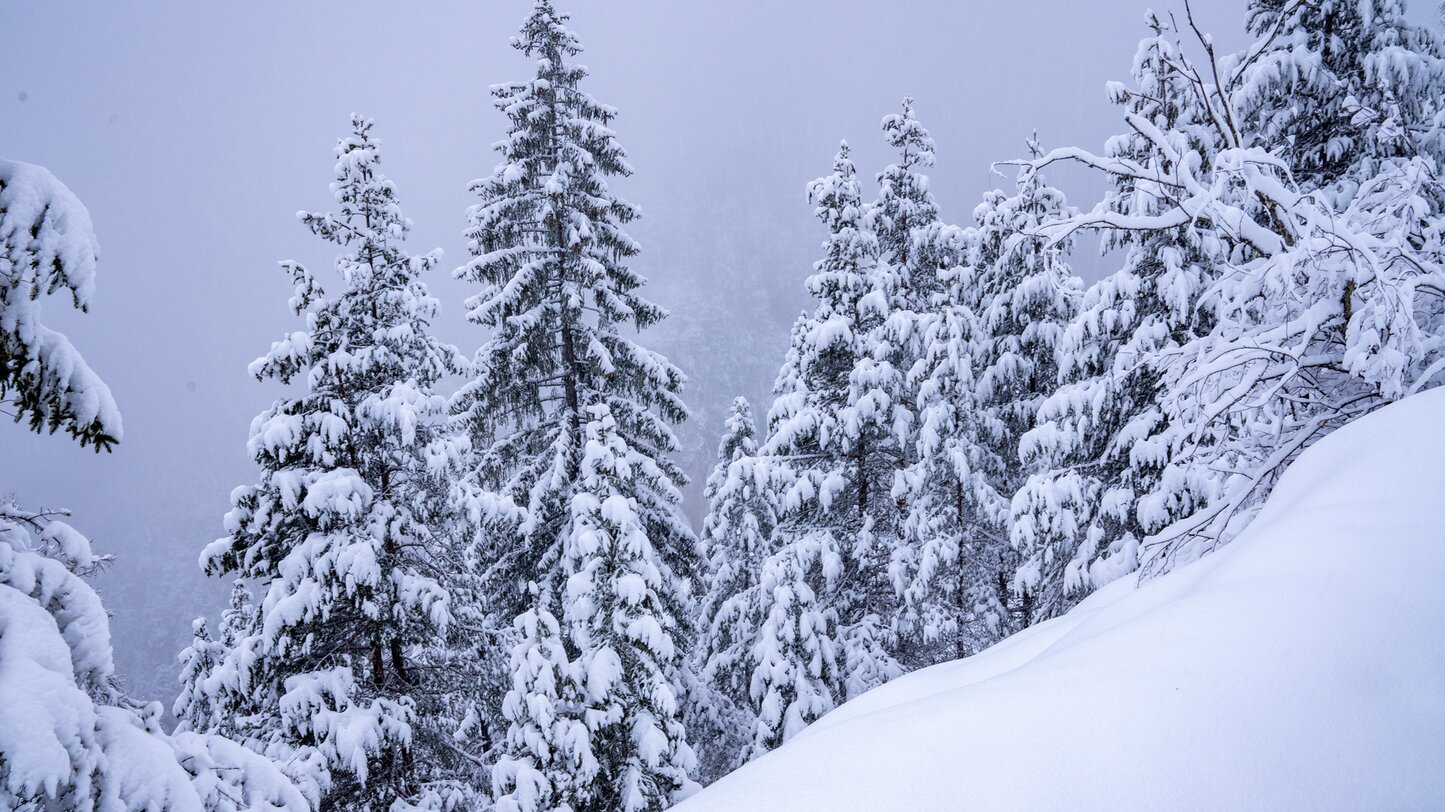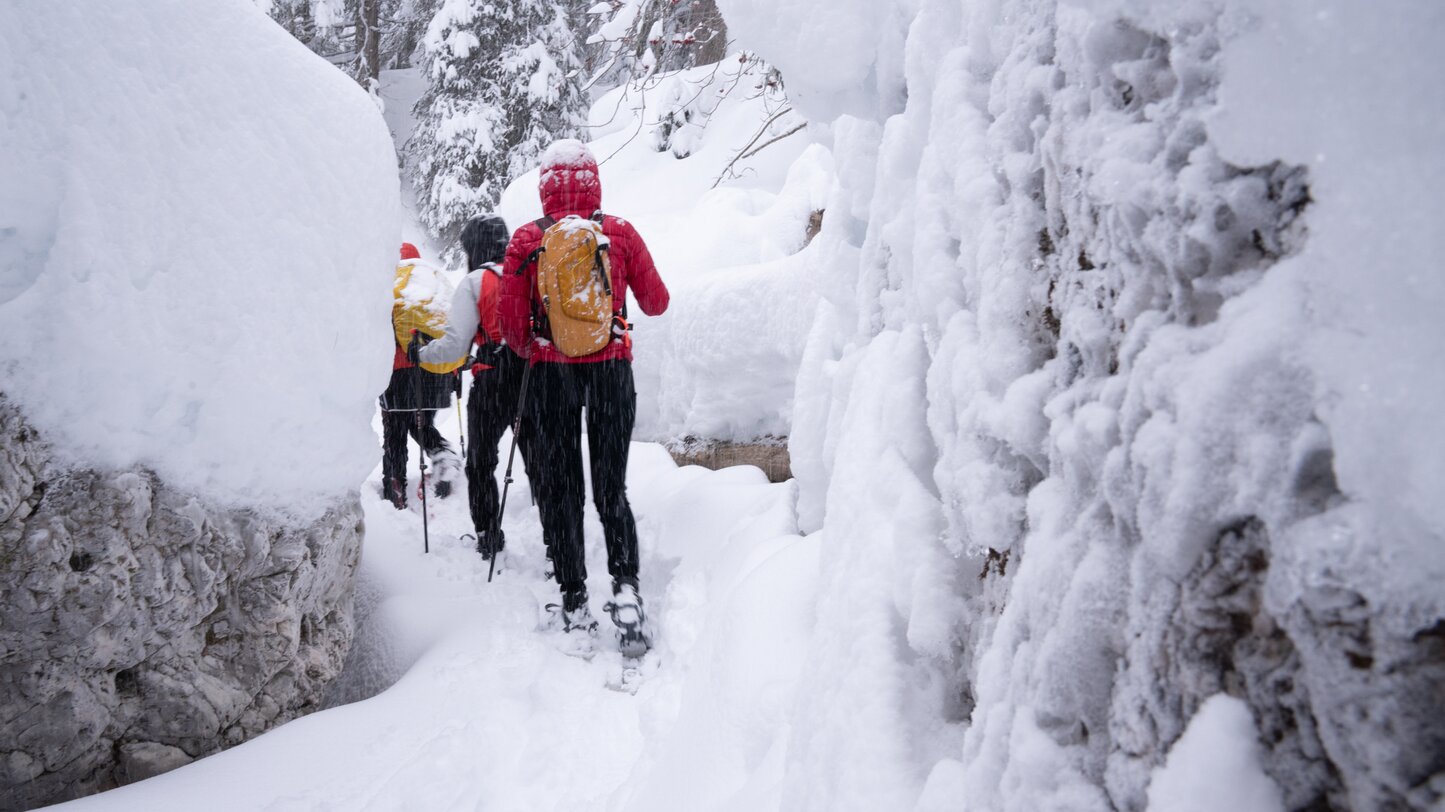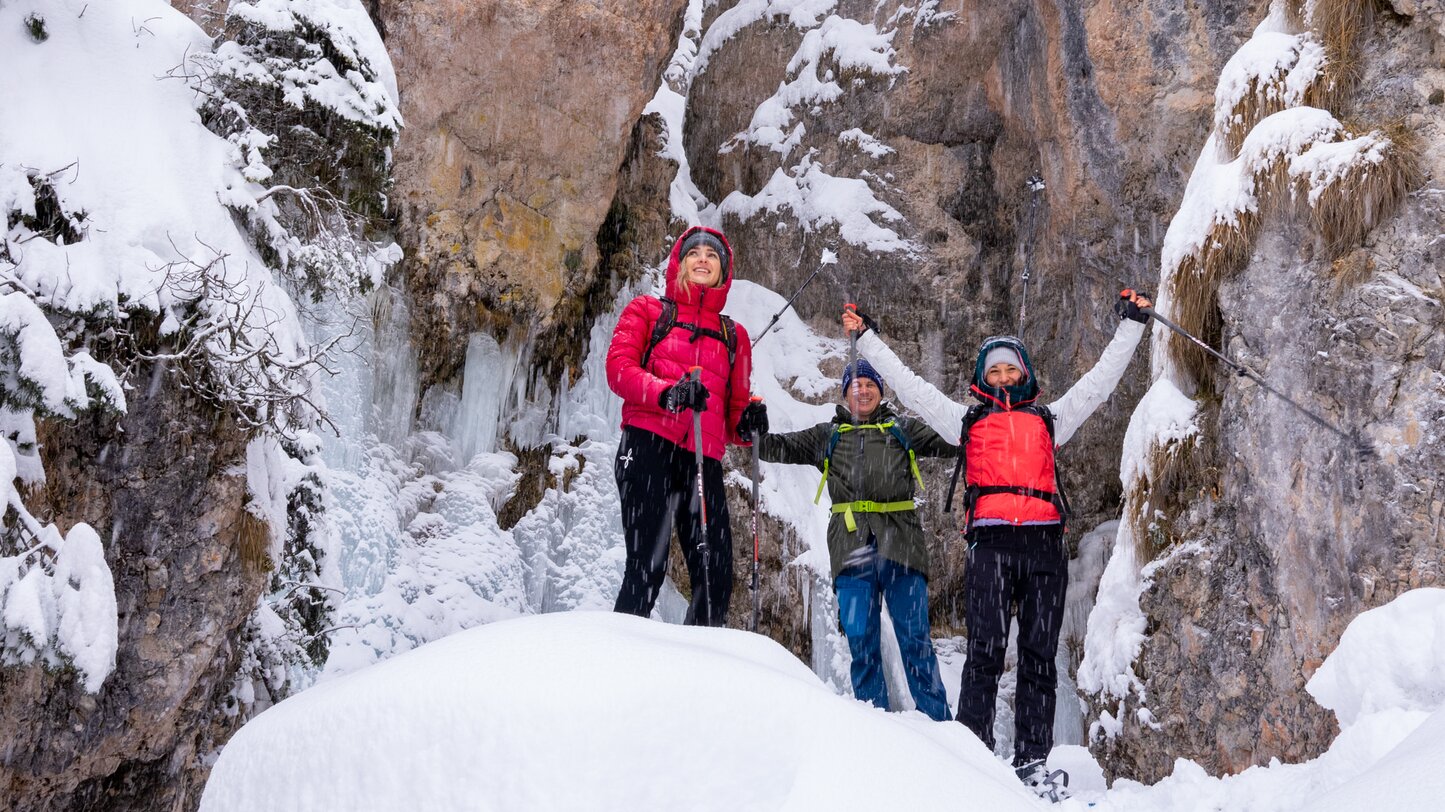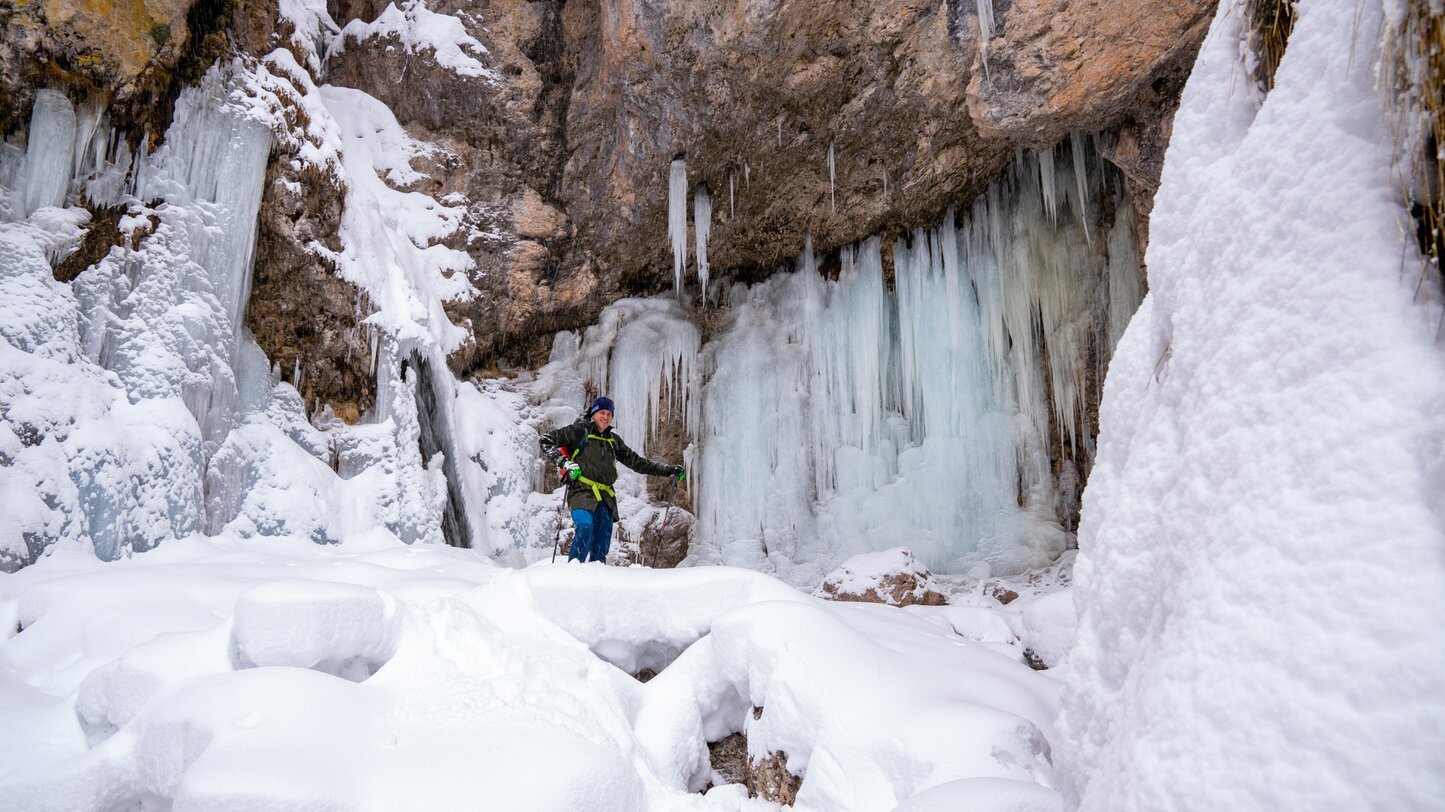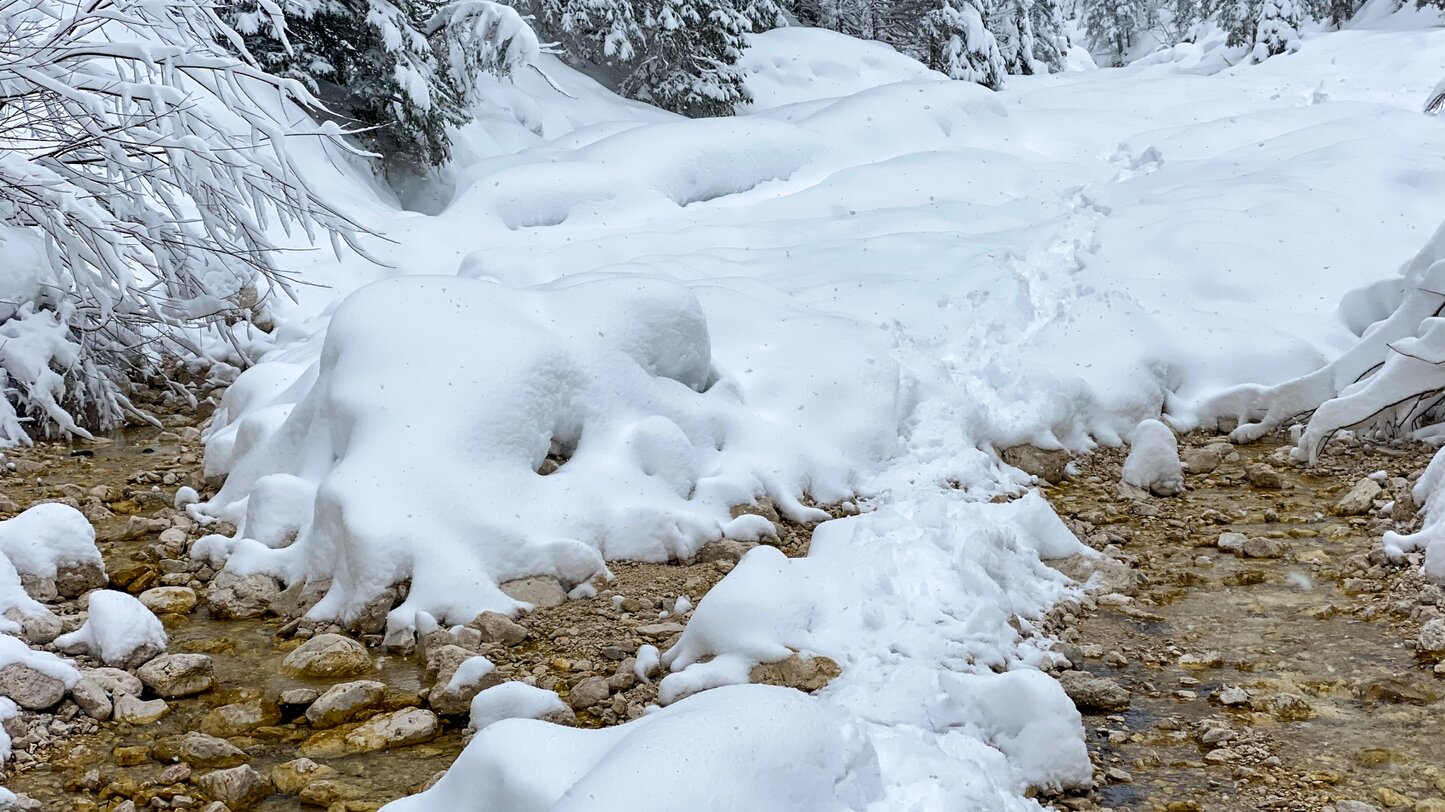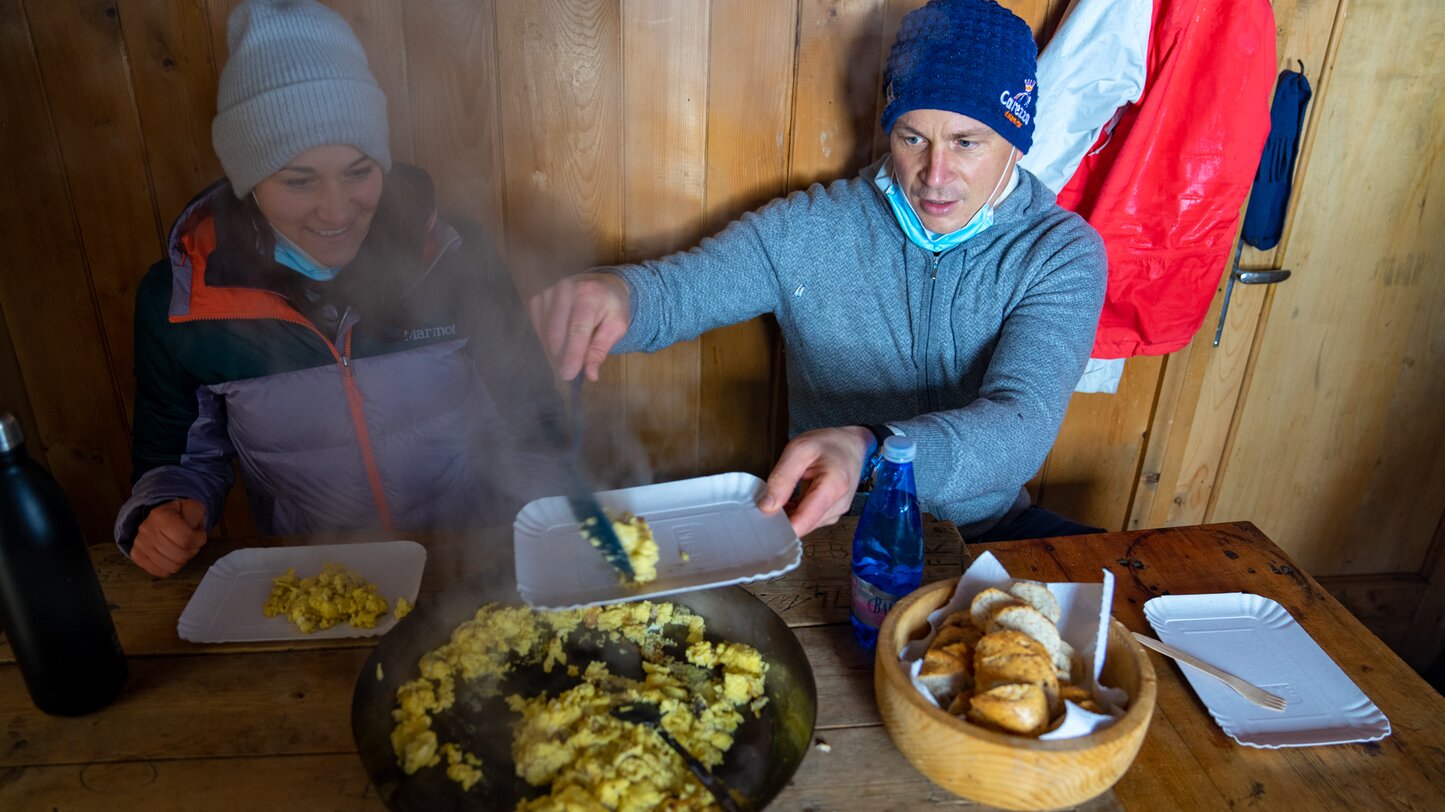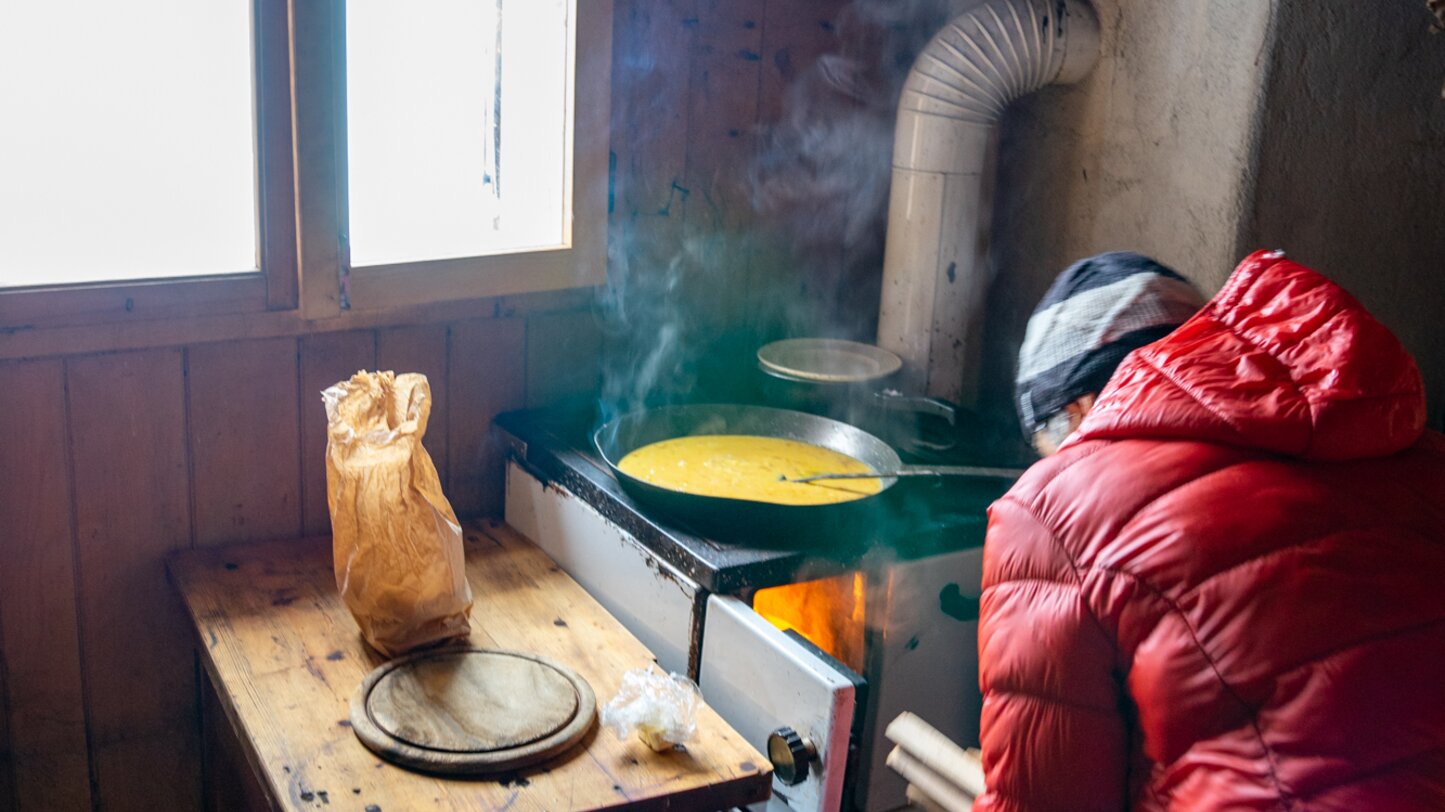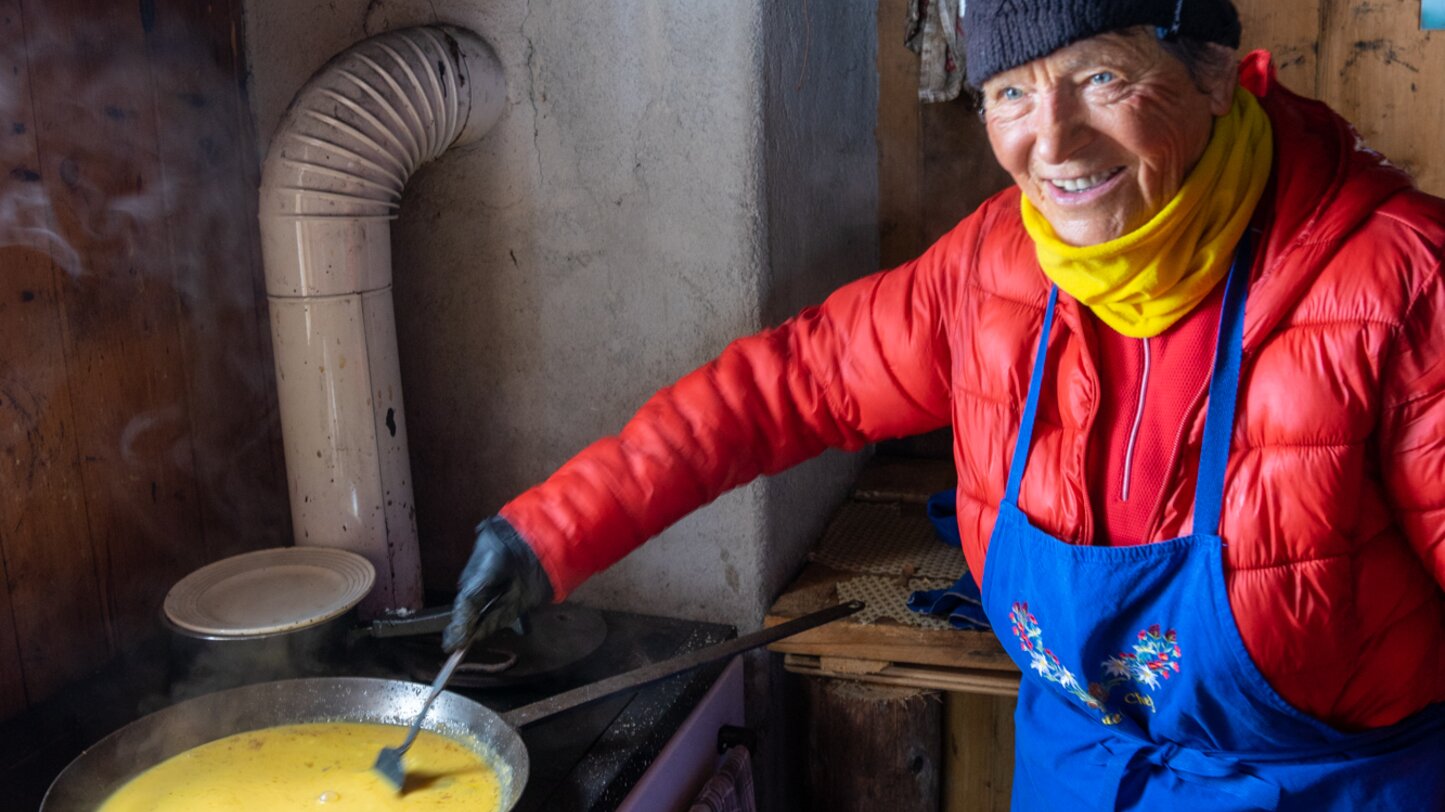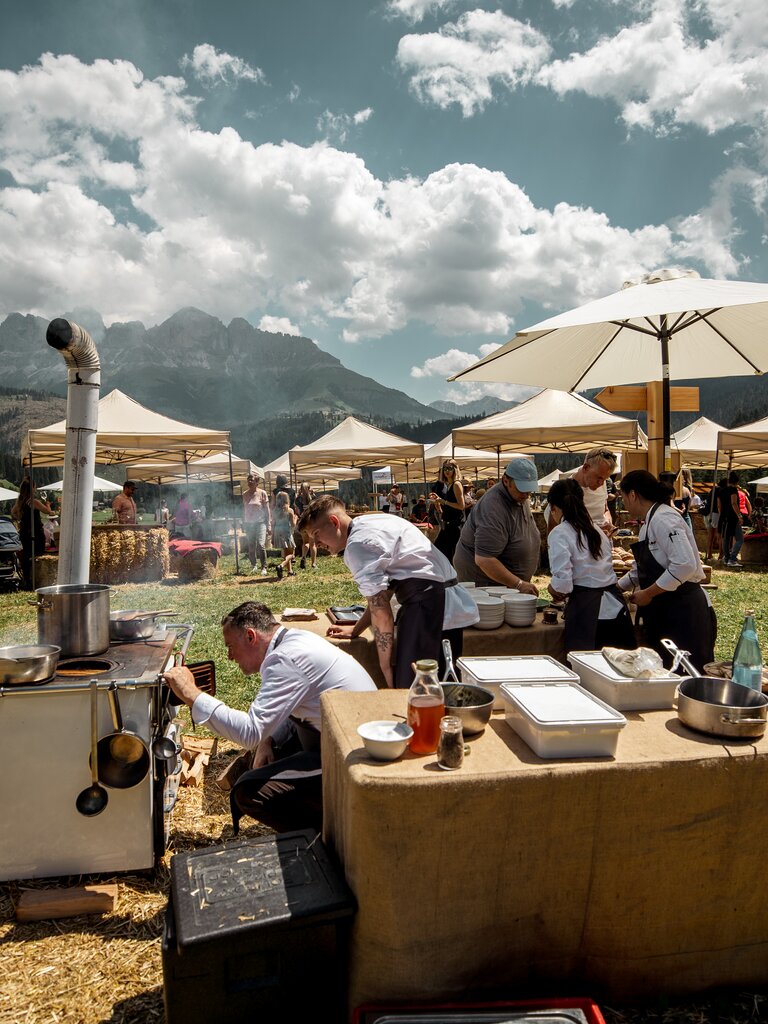Snowshoe hiking with Heidi in Tiers/Tires at the Rose Garden
"Such a beautiful, snow-filled day – the perfect snowshoe hiking weather," Heidi laughs as she welcomes us at the Vajolet alpine hotel in Tiers/Tires at the magnificent Rose Garden. For more than 20 years, the hardy 72-year-old has accompanied nature lovers on hikes and along groomed cross-country skiing paths. And she has quite a repertory of tales to tell along the way. But first, our equipment has to be adjusted. "We do that here at the hotel – we can do it more precisely than out in the snow. The important thing is to have good traction. And the snowshoes mustn't work their way loose from your shoes", Heidi explains. The poles, too, must be adjusted. And each person should have a thermos with them. We begin our march from the Runggun parking lot, where a giant-sized snowshoe marks the spot. We continue across the Doss Meadows and past numerous dairy farms (with cabins or shelters – where the farmers live) while Heidi tells us how she used to spend her summer months here. In the summer, the cows are allowed to graze in the forests and meadows, thus saving the hay for the winter. The cowherd – a so-called "Hiater" – lived on the farmstead during this time. By the time autumn had come around, the fields had been grazed clean, so the cows were then fed the third cutting of grass – so-called "Poufl" – unloaded into the troughs. Heidi and her sisters always got to herd the cows for a week in the autumn. "It was a minor catastrophe when the herd wandered over to the neighbor's meadows. The neighbor would go out, count the number of cow pies littering his land, and my uncle would have to pay," Heidi recalls. "Next year, we were smarter", she chuckles, "and cleaned up after the cows."
"We loved herding the cows", Heidi remembers fondly. "We would smoke 'Raftschoidn' (dialect for the alpine clematis, a member of the Buttercup family) and have all kinds of fun. "But we'd really get in trouble if anyone spotted a burn-mark on our aprons from smoking. I once actually bit out a burn-spot just so no one would catch me – the apron was ruined, of course, but that was a small price to pay."
After we pass the last farmstead, we reach the Tschamin Valley – known also for its splendid spring water. Right at the start of the valley, there's a crystal-clear spring which bubbles up through the earth at the "Schwarzen Letten" (dialect for "black mud"). Despite its name, the water from this spring is sparkling clear. It is especially praised for its long-lasting freshness – even after a whole day of hiking, a cool slug from your thermos is still refreshing and pure.
We continue our snowshoe journey and cross several bridges over the Tschamin Brook until suddenly the brook has vanished. "That is a natural phenomenon," Heidi explains. "In the wintertime, the brook flows underground up to this point, and is visible at the surface only in the summer." So from here on out, we trudge directly in the bed of the brook, winding our way amidst large boulders, and enjoy the incomparable peace.
After a full two more hours, we reach the "Am Rechten Leger" dairy farm. A herdsman stands watch during the summer, and Heidi sees to it that the hut is kept clean and tidy. "In exchange, I can come here in the winter and cook on the stove," Heidi explains cheerfully. "But first, I better see if I can make a fire – there's so much snow on the chimney! But it won't be so hard – it's a great stove," Heidi laughs and dons her blue South Tyrolean apron with the words "I'm the boss!" printed on it.
Heidi is radiating cheerfulness. Her blue eyes sparkle, and she is full of energy. "Florian, please fetch me a pot full of snow so I can clean the pan later. In the meantime, the girls can set the table!" Heidi assigns each person a task to perform in the freezing cold. "Sometimes the mercury drops to -16 °C (-3 °F), then I tell the guests that they should first take a short lap in their snowshoes while I arrange for everything. I once accidentally cracked an egg onto the floor – it froze instantly. It was impossible to scrap the frozen egg away," Heidi relates.
To be honest, I've never eaten such delicious scrambled eggs! And I thankfully soak up the glorious heat radiated by the wood-burning stove as it slowly permeates the little wooden cabin. Moments like these are precious! But Heidi had anticipated that our now bare fingers would be getting cold, and so passes out some woolen gloves she'd thoughtfully packed in her rucksack for us. After our meal, she uses the bucket of now-melted snow to wash out the pan and then greases it again with butter – so that everything will be ready the next time another group stops by.
"Let's march to the waterfall to warm up!" Without a moment's hesitation, the spry 72-year-old leads the way. Wow! When we finally get to the waterfall, our jaws drop. The tremendous view of the rugged cliffs of the Schlern/Sciliar is a sight to behold! Heidi and Florian even dare to walk all the way under the icicles in the Plafötsch Valley. It is still snowing, so we decide to now commence our 2-hour march back to the starting-point.
Once we arrive back, Heidi sighs with contentment and announces: "Now I can rest for a few hours. The next tour is tomorrow. I'm already looking forward to it!"
